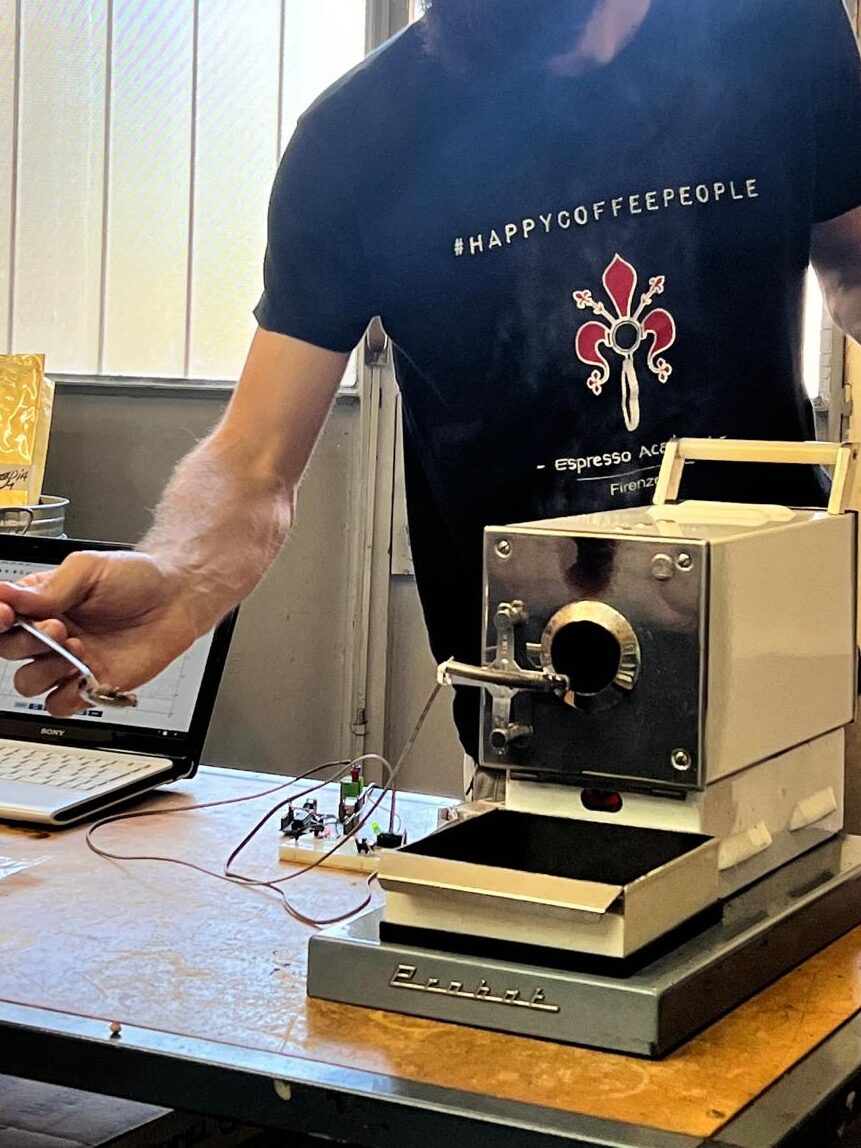Your cart is currently empty!

What we want from a sample roaster
Sample roasting is a fundamental step in the selection of our raw ingredient.
At the heart of the quality of any product there is the careful selection of its ingredients and when it comes to coffee this means we need a reliable method for selecting our green.
My favourite example is the art of baking cookies (and I wish I could give demonstration during our courses):
The difference between really good and mediocre cookies is not in the skills of the baker in putting them in the oven and taking them out at the right time. It’s the selection and balancing of the ingredients.
Sure, if the oven is at the wrong temperature or if you don’t get the timing right they will still not be the best and when you try a new oven for the first time it can be very difficult, but at the end of the day that’s still the easiest part.
If in a roasting company we don’t dedicate all the necessary attention to the selection and quality control of green coffee we risk making very well baked but tasteless “cookies”
When green coffee traders contact us, their purpose is to sell.
Our purpose is to understand what we are buying and choose wisely:
Do we need something cheep? Perfect, let’s find the cheapest option that doesn’t taste like rotten potatoes.
How sensitive are our customers to a “phenolic” taste? How bad of a coffee do they tolerate?
Are we looking for something sweet? Ok, we’ll ask for some expensive samples.
How much acidity do our buyers enjoy? Are they looking for a full bodied chocolate and hazelnut flavoured coffee or a washed citric “lemon juice”?
It doesn’t really matter, the only way we can find the best solution is tasting.
A sample roaster is supposed to be a predictable companion that will follow us in our whole career and possibly the future generations managing our company.
It’s not always going to be the most practical tool to use, it might not roast the best coffees either.
The objective is information.
The more information we get from the coffees we roast with this machine, the higher the quality of our decision can be.
So let’s get to the first question :
Fluid bed or drum?
Fluid bed roasters are well known to roast fast, easy and clean. Amazing if you are in the production side of the company. Even without much experience you can get anyone to operate this machine and get a decent clean coffee.
Drum roasters are much more difficult, if you go to fast you burn the surface, too slow and the beans will taste like bread.
If the beans have a strange flavor it will almost definitely show up, but if they have a positive flavor you can showcase all the different interpretations of that attribute, 5 seconds longer in the development stage and you go from fresh apricot to apricot jam.
So what about size?
Usually small companies need to be careful with how they spend their money. Having a 1kg roasters can be usefull for production so why not use it as a sample roaster as well with 100g batches?
It’s for the same reason we don’t simply roast in a pan: it’s possible, the beans turn from green to brown, but it’s not useful.
A 100g sample roaster is really the only option in 90% of the cases I’ve seen.
Do you have a panel of 20 tasters and a tasting protocol that requires a 1/2Kg of coffee per sample? Ok, a bigger sample roaster can be useful, good luck getting 5 or 6 samples of €50/Kg specialty coffees.
Gas or electric is not something I’m too concerned about with small machines.
I know people are concerned about the slower response time of a heating element compared with a gas burner but if you learn to know your machine I think you can get even more predictable results with electric.
Gas remains the top choice for most and I understand because it really is much faster, as soon as you realize your roasting too fast you can reduce the gas and the result is immediate.
Anyway, these are really simple machines, easy to maintain, fix or upgrade. I wouldn’t worry at all about their age, scratches or squeaky noises. Their quality sits in the shape and material of the drum. Some are less practical to use, they take more attention and experienced operators and usually that’s not a real problem, although some are really easy, with automatic profiles and much more and that’s definitely of great help.
Think about it well, imagine how you will use it, who will roast on it in the future and the answers to your questions will appear by themselves!
Hope you enjoyed this post, sample roasting is one of my favorite parts of the roasting process, it’s also how I learned most of what I know so I strongly suggest starting from there and never stopping

Leave a Reply
You must be logged in to post a comment.